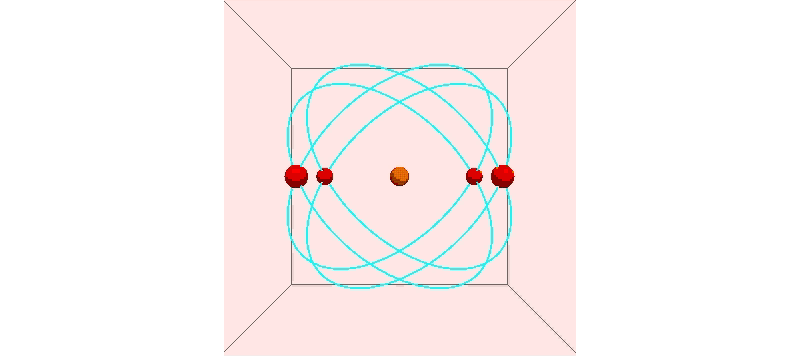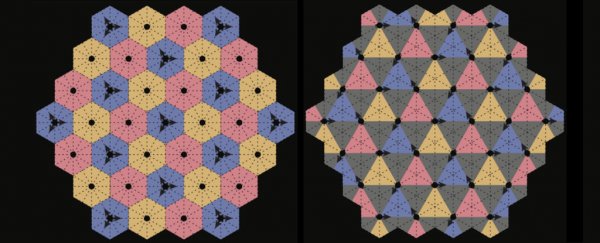Crystals might be defined by their symmetrical, highly organised atomic structure, but all that could change with the description of a new class of crystal that has a structure that's always moving, so it appears messy in an instant, but highly ordered over time.
Based on the idea of a constantly moving formation of satellites that could help us hunt for gravitational waves, these theoretical "choreographic crystals" could be used to solve many problems in mathematics and computing, and might one day be discovered in nature, says a team led by physicist Latham Boyle from the Perimeter Institute for Theoretical Physics in Canada.
The discovery comes thanks to gravitational waves - ripples in the curvature of spacetime that emanate from the most explosive and violent events in the Universe. First proposed by Einstein in 1916, these fundamental constituents of the Universe (if they exist) have so far never been directly observed, but rumours started flying last week that this could all be about to change.
It's 2016, and gravitational waves are having a bit of a moment, so Boyle and his team decided to come up with a better way of detecting them.
Right now, the recently launched LISA Pathfinder system is our best bet. It's a trio of satellites equipped with highly sensitive detectors that orbit Earth in a triangular formation, sending a constant stream of laser beams back and forth to each other. The idea is that if gravitational waves happen to pass by these satellites, the laser beams will be disturbed, and the activity recorded by the satellite-based detectors.
While this is a pretty awesome system, and the best we have right now to detect gravitational waves, Boyle wanted to investigate how much extra ground we could cover with a system of four satellites instead of three. As it turns out, this seemingly simple question had an incredibly complex answer, as Jennifer Ouellette explains over at Gizmodo:
"Having four satellites instead of three would enable physicists to more precisely determine a gravitational wave's amplitude (its volume or height, if we're likening it to a sound or ocean wave), polarisation (the plane along which it vibrates), and from which direction it is traveling.
But it's a much more complicated (and expensive) engineering challenge to build such an instrument. And as Boyle soon discovered, finding a symmetrical four-satellite orbit proved impossible."
This is because the only way you can ensure that four separate points moving around in a system can maintain absolute symmetry is in a tetrahedron formation - a basic triangular pyramid. But the problem with a tetrahedron is that this symmetry is lost as soon as you try to apply it to a three-dimentional plane.
So together with his team, Boyle came up with a new 'choreography' for his four satellites that would see them constantly moving together in a system that doesn't look particularly ordered if you took a picture of them all in a single moment, but if you were riding on one of them and filming a movie, that movie would look the same regardless of which satellite you were on, Lisa Grossman explains at New Scientist.
 New Scientist
New Scientist
Boyle calls this "choreographic symmetry", and says that different crystal structures ordered according to this formation could prove incredibly useful for mathematicians and computer scientists working on complex theoretical problems. "Boyle hopes that choreographic crystals might prove relevant to many mathematical problems, just as the static lattices of standard crystallographic theory have found applications ranging from pure number theory to error correction in computation," says Phillip Ball at Physics Focus.
While Boyle and his team have no idea whether this type of fluid crystalline structure could exist in nature, we can't rule out the possibility of them being produced synthetically at some point.
"There is precedent for this idea: quasicrystals, which have ordered but non-repeating patterns, were first proposed theoretically, then built in the lab (garnering their discoverers a Nobel prize), and finally found naturally in a meteorite that had landed in a remote part of north-eastern Russia," says Grossman.
The research has been published in Physical Review Letters.
